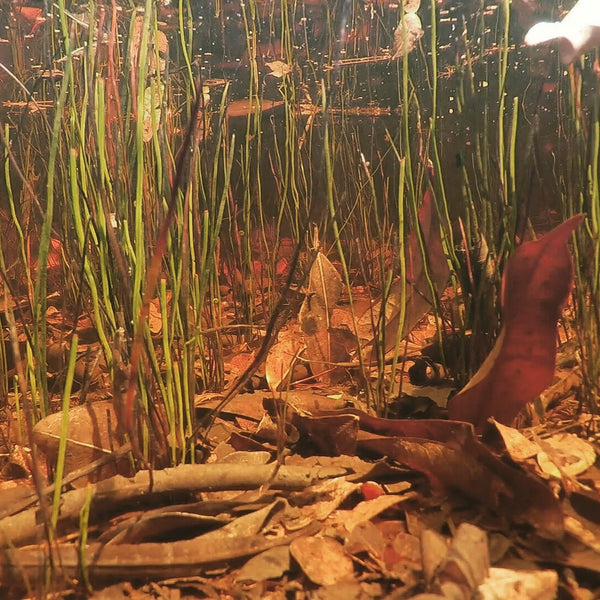- Continue Shopping
- Your Cart is Empty
Return to the igapo...
If you think about it, the flooded forest floors of Amazonia are some of the most interesting and unique habitats in the world. We can't seem to stay away from them as one of the ultimate models for biotope diversity and sheer fascination!

These bodies of water are "seasonally inundated" by the significant rainfall common ottos region; some of these forests may be submerged for almost half a year...that's a LOT of water! Like, 3%-4% of the water in the Amazon Basin at any given time...And these are precious, diverse natural treasures, so replicating one in the home aquarium is another way to learn and teach more about them, isn't it?

Igapo forests have a pretty significant amount of trees; one study found that over 30 species of trees are found in these areas, creating coverage of something on the order of 30%, and are known to have soils that are acidic in nature, yet low in nutrient content (because they don't receive a seasonal influx of nutrients like regions called "varzea", which are flooded by sediment-laden "whitewater" rivers). The water depth can vary from as little as 6-8 inches ( 15.24cm- 20.32cm), to almost 20 feet (6.96m)! And of course, they have a lot of tannin and humic substances in them from all of the soil and plant materials.

Igapo remain surprisingly "nutrient poor" by ecological standards, because the nutrient-rich alluvial sediments from the Andes, carried by whitewater rivers, which are deposited into the varzea forests annually, don't find their way into these habitats.
Another interesting thing about Amazonian streams and flooded forest areas in general is that there is no significant "in situ" (in place) primary production, and that the fish populations that reside in them depend on what is known as "allochthonous input" (material that is imported into an ecosystem from outside of it) from materials like seed pods, fruits, blossoms, leaves, and dead wood from the surrounding forest.

This is why leaf litter beds are so important in blackwater, as they serve as sort of "aggregators" of terrestrial material, and foster decay and biological processes which support what aquatic ecologists call "food webs." Most of the aquatic life forms which reside in these waters are aggregated in submerged litter.
These inundated forest floors are fascinating subjects for aquarium replication! As we mentioned before, the soils in these forests are typically acidic and sandy. The tributaries that flood them are often covered with a whitish, fine-grained sand, which is commonly found in this habitat after the inundation. So, from an aesthetic and functional standpoint, many of the aquarium-specific sands that we play with in the hobby are perfect for this type of simulation.

In a comparative study of Amazonian fish diversity and density conducted by Henderson and Crampton in 1994, in nutrient poor blackwater igapó at the blackwater sites had low turbidity, a very low conductivity, and a pH of 5.3-6.0. A more recent study I stumbled upon indicated a pH range of 3.4-5.5, so it really depends on the specific locale, the length of time that the forest has been inundated, and the density and quantity of the leaves and other plant materials which accumulate on the substrate.

In these Igapo habitats, the dominant species of terrestrial grass when in the dry phase is Lagenocarpus pulchra (Google that one!). There are other plants in the family Cyperacea which includes some riparian species available in North America and Europe...I mean, a terrestrial plant which survives periods of inundation? Who's up for THAT experiment?
The idea of a submerged grassy forest floor with leaf litter is enough to send my creativity into overdrive!

Can you envision creating THIS in your tank?
The sites in the study held high-diversity fish communities with many species yielding 68 species. Each section of this habitat has some characteristics which shape the population composition and density, and it is worth noting when thinking about stocking our aquariums, doesn't it?

I think it does!
Thanks as always to our friends David Sobry, Mike Tuccinardi, and Tai Strietman for their compelling and inspiring photography!
Explore these inundated forests. Help unlock their secrets, their function...Learn about the challenges they face, and the unique interdependencies among the species which reside there...
Create an igapo in your own home aquarium! It might just change the way you look at "natural" aquariums!
Stay inspired. Stay excited. Stay curious. Stay creative. Stay persistent...
And Stay Wet.
Scott Fellman
Tannin Aquatics








Scott Fellman
Author